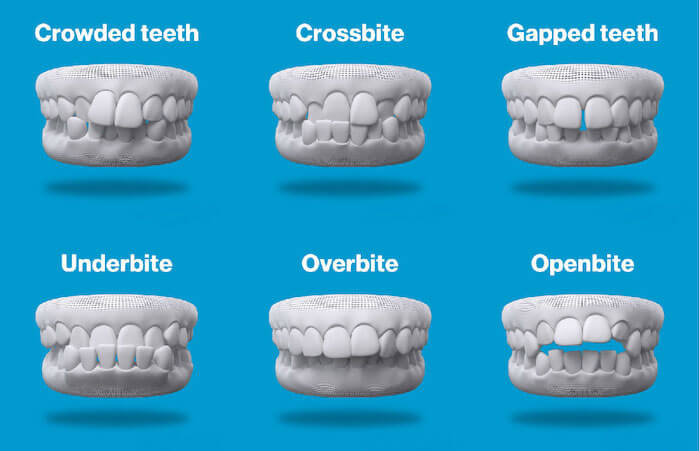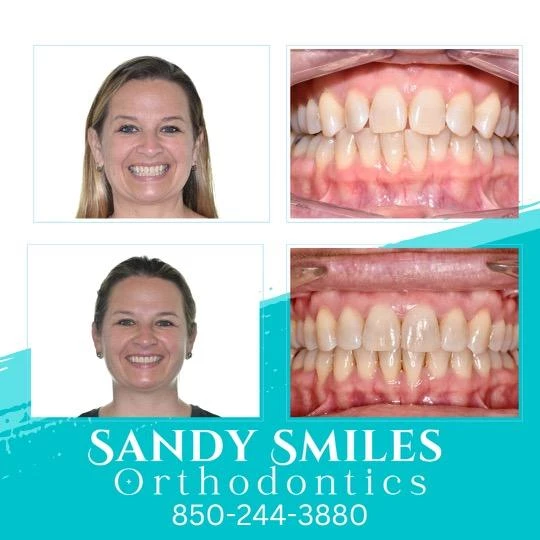Top Reasons to Select Invisalign Over Other Orthodontic Treatments
Top Reasons to Select Invisalign Over Other Orthodontic Treatments
Blog Article
Invisalign vs. Conventional Braces: Which Choice Is Right for You?
When thinking about orthodontic treatment, the selection between Invisalign and traditional dental braces presents numerous essential factors that merit mindful examination. Invisalign offers a very discreet alternative with detachable aligners, while traditional dental braces provide an extra visible yet efficient solution for extreme misalignment. Each alternative includes distinctive benefits and drawbacks associated with aesthetic appeals, convenience, treatment duration, and price. Understanding these nuances is critical for making a notified choice that straightens with your personal preferences and way of living. The question stays: which choice will ideal meet your orthodontic requirements and assumptions?
Review of Therapy Alternatives

In comparison, standard braces include metal braces and wires that are bound to the teeth. This approach applies constant stress over time to accomplish placement. While effective for complicated orthodontic problems, typical braces need routine visits for modifications and can present obstacles in maintaining oral hygiene because of the problem of cleaning around cables and braces.
Both choices have their qualities, and the choice frequently rests on certain oral problems, way of life choices, and person conformity. Inevitably, consulting an orthodontic professional is essential for identifying the most appropriate treatment plan customized to specific demands. Recognizing the subtleties of each choice can substantially influence the overall success of orthodontic therapy.
Visual Factors To Consider
A considerable element affecting the choice in between Invisalign and typical dental braces is the visual appeal each treatment uses. Invisalign aligners are crafted from clear plastic, making them basically invisible when put on. This discreet appearance is particularly interesting adults and teenagers who may feel uncomfortable about their orthodontic treatment. The capability to keep a natural smile throughout the placement procedure can dramatically boost the person's self-confidence in expert and social setups.
In comparison, traditional braces include metal brackets and cables, which can be much more recognizable. While advancements in orthodontic technology have caused the development of smaller sized braces and colored elastics, typical dental braces still keep an even more obvious profile. For some people, the exposure of dental braces might hinder them from looking for essential therapy.
Ultimately, the choice between Invisalign and typical braces may rest on individual preferences relating to visual appeals. Clients who focus on discretion commonly favor Invisalign, while those who are less concerned regarding presence may opt for standard braces. Understanding the visual ramifications of each choice is important for making an informed decision that lines up with one's way of life and preferences.
Comfort and Convenience

In regards to ease, Invisalign aligners are removable, allowing people to enjoy their preferred foods without constraint and maintain optimal oral health. Cleaning and flossing are simplified, as the aligners can be taken out throughout these routines, whereas traditional dental braces call for cautious steering around cords and braces.
In contrast, typical dental braces necessitate routine changes, making them less practical for those with active timetables. Generally, the comfort and convenience of Invisalign make it an enticing option for several people looking for orthodontic treatment.
Therapy Period and Efficiency
While both Invisalign and typical browse around these guys braces work in correcting oral imbalances, the period of treatment can vary substantially between both alternatives. Usually, Invisalign therapy can take anywhere from 12 to 18 months, relying on the complexity of the instance. The clear aligners function by progressively shifting teeth into their desired positions, and normal follow-ups with an orthodontist help ensure progression stays on course.
In contrast, typical braces often need a longer commitment, usually varying from 18 months to three years. This is due to their set nature and the use of brackets and cords, which can be much more reliable for complicated cases and severe misalignments (Invisalign). The therapy performance of conventional dental braces is well-documented, as they enable specific adjustments and greater control over tooth motion
Ultimately, the option between Invisalign and traditional dental braces may depend upon both the anticipated therapy period and the certain oral concerns handy. Consulting with an orthodontist is vital, as they can give customized recommendations based on private demands, making certain the selected approach aligns with preferred durations and end results.
Price Contrast and Insurance Coverage Choices
Price plays a considerable function in the decision-making process for people considering orthodontic therapy, whether going with Invisalign or standard braces. Generally, the cost of Invisalign ranges from $3,000 to $8,000, while standard braces typically cost in between $2,000 and $6,000. Variables influencing these costs include the complexity of the situation, the period of therapy, and geographical area.
Numerous dental insurance policy strategies give partial coverage for orthodontic therapies, yet the specifics can differ commonly. Normally, standard dental braces might be much more often covered by insurance strategies compared to Invisalign, which some insurance providers categorize as an aesthetic procedure.
In addition, numerous orthodontic methods use adaptable repayment strategies, making both therapy alternatives much more obtainable. Patients ought to see here ask about possible funding choices and discounts for in advance repayments. Reviewing the complete price, consisting of insurance coverage benefits and layaway plan, is important for making a notified choice that straightens with both visual preferences and spending plan factors to consider.

Conclusion
In summary, the selection between Invisalign and standard dental braces depends upon numerous aspects, consisting of visual preferences, comfort, treatment duration, and cost. Invisalign provides a discreet, removable option that assists in dental health and dietary flexibility, while typical braces may be preferable for intricate dental issues and typically come at a reduced price factor. Inevitably, appointment with an orthodontist is important to examine specific scenarios and figure out one of the most appropriate treatment alternative for accomplishing ideal dental alignment.
When considering orthodontic treatment, the choice in between Invisalign and typical braces presents several important aspects that merit careful examination.Comparing Invisalign and conventional dental braces reveals unique treatment options for orthodontic improvement.While both Invisalign and standard braces are effective in remedying dental misalignments, the period of treatment can vary considerably in between the two alternatives.Expense plays a substantial role in the decision-making procedure for individuals taking into consideration orthodontic treatment, whether opting for Invisalign or traditional braces.In recap, the option between Invisalign and standard dental braces pivots on multiple elements, consisting of aesthetic preferences, convenience, treatment period, and expense.
Report this page